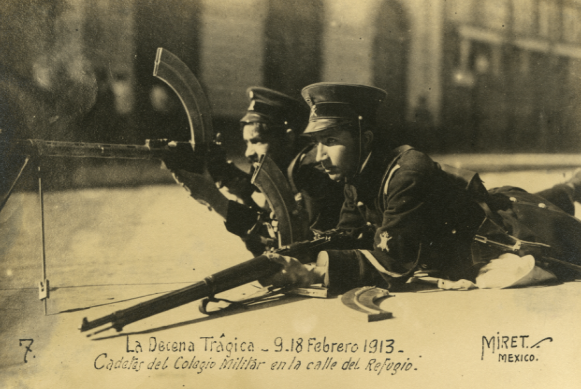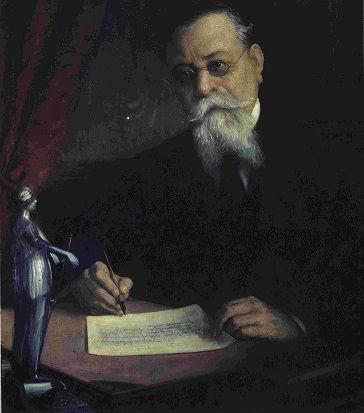The Mexican revolution
- LatamSinFiltro

- Aug 27, 2025
- 6 min read

The Mexican Revolution officially began on November 20, 1910 right after the re-election of General Porfirio Diaz, in power for over 35 years.
Over time, the conflict escalated into a guerrilla war between the various revolutionary factions. Historians disagree on the end date of the Mexican Revolution, but it is generally considered to have ended in 1917 with the promulgation of a new constitution. Although the conflict resulted in over a million deaths, the revolution is a major historical event in Mexico as it led to the drafting of the Constitution of
the current Mexican State.
The beginning of the revolution: the Plan Of San Luis
General Porfirio Diaz became president of Mexico on November 28, 1876, after the end of the Tuxtepec Revolution. He remained in power until 191. The period 1876-1911 is called the Porfiriato. Under Díaz, the country began to develop its industry, mainly through the establishment of foreign companies in the country. While the political and economic power were concentrated in the hands of an elite, the majority of the population lived in poverty. Latifundios still existed and Mexican workers were spending long working hours in fields or in factories to earn very little.

In 1907, Porfirio Díaz gave an interview to American journalist James Creelman, in which he declared that Mexico was finally ready for democracy. This declaration changed the country's political climate. Several opposition parties were formed and thus prepared for the upcoming elections that were supposed to be celebrated in 1910.
Francisco I. Madero created the Anti-Reelection Party in 1909. Despite his words, Porfirio Diaz blocked the proper functioning of the presidential elections of 1910 and maintained power.

The beginning of the Mexican Revolution took place when Francisco I. Madero proclaimed the Plan of San Luis on November 20, 1910, in which he declared the elections illegal and called on Mexicans to rise up in arms against the government of Porfirio Díaz. He reuses Díaz's slogan from his early days in politics: "Vote respected, no re-election."

At this time, Madero only required a democratic transition after years of dictatorship, and demanded to respect the principles of equality, justice and freedom.
The first martyrs of the Revolution were the Serman brothers. They were allies of Madero and two of them died on November 18, 1910, during a clash with the Puebla police and the federal army.
Various revolutionary groups started to join Madero’s fight. Leaders representing peasants like Emiliano Zapata in the south of the country or Pancho Villa and Pascual Orozco in the north demanding social justice joined the rebellion.
Rapidly, the revolutionary movement spread throughout the entire territory.
Faced with the pressure, Porfirio Díaz announced his resignation on May 25, 1911, putting an end to 36 years of Porfiriato, but not the revolution.

The ten tragic days: February 1913
Madero became president on November 6, 1911, but his government failed to meet the demands of the various revolutionary groups that supported him against Diaz.
This is when revolutionary leaders started to clash: on one side those who defended Madero's ideas such as Pancho Villa, and on the other side those who did not recognize his legitimacy, such as Zapata and Orozco. Different factions formed.
In February 1913, a coup against Madero was organized by Victoriano Huerta, resulting in Madero's resignation and assassination three days later.
Huerta’s military career started during the Porfiriato. After the Plan of San Luis, he became general and served Madero’s government. However, in 1913, he betrayed him by secretly signing the Pact of the Ciudadela (also known as the Pact of the Embassy) with the U.S ambassador and Félix Diaz, Porfirio's nephew, to organize a coup.
With the help of a counter-revolutionary group, Huerta overthrew Madero and usurped presidential power.

The plan OF Guadalupe
After Huerta came to power, the rebel’s actions further intensified. That is when the governor of the state of Coahuila, Venustiano Carranza, signed on March 26, 1913 the Plan of Guadalupe. This document declared illegal the government of Victoriano Huerta, called "the usurper," as well as the legislative and judicial powers, and all the local governments that recognized Huerta as the legitimate president. Venustiano Carranza was appointed head of the Constitutionalist Army in order to fight against the Federal Army led by Huerta.

According to the plan, after having taken back control of the capital, Mexico City, Carranza would have to assume executive power and call elections.
The Constitutionalist Army was divided into three factions:
The Northeast Army, led by General Pablo González Garza
The Northern Army, led by Francisco Villa
The Army of the Northwest, led by Álvaro Obregón
After a few months, the Constitutionalist Army succeeded in taking the power back in several states such as Chihuahua, Monterrey, Coahuila, Zacatecas... Faced with internal and international pressure, Huerta finally relinquished power in July 1914 and Carranza became president until August 13 of the same year.
The resignation of Huerta did not put an end to the war…
The convention of Aguascaliente
From September 1914, the leaders of the different revolutionary factions and of the Constitutionalist Army began to fight against each other. Pancho Villa, Emiliano Zapata, Álvaro Obregón and Venustiano Carranza had disagreements.
Venustiano Carranza claims to be the legitimate head of state because he was at the head of the Constitutionalist Army that won the fight against the Huerta government. Francisco Villa, on his part, demands a repartition of territories after winning the most important battles against Huerta.
Finally, Emiliano Zapata demands the implementation of the Plan of Ayala : document drafted by Zapata himself in 1911 in which he denounces the then president Madero, declaring that he did not respect the Plan of San Luis, and set out his vision of land reform to give back haciendas to the common people.
Zapata and Villa decided to form an alliance under the name of "Conventionists" and thus confronted Carranza's constitutionalist troops.
At the Convention of Aguascalientes, held from October 10 to November 9, 1914, the Conventionists rejected Carranza and forced him to move his government to Veracruz and designated Eulalio Gómez as the legitimate president of Mexico.
The drafting of the new Constitution and the end of the revolution
The fights between the Conventionists and the Constitutionalists continued until November 1916. By September, the balance had already tipped in favor of Carranza's troops, who decided to convene a Constituent Assembly to draft a new federal Constitution. It took Congress two months to draft it. Some of the groundbreaking articles include:
Article 1 establishes the granting of individual rights to all Mexicans.
Article 2 prohibits slavery.
Article 40 states that Mexico is a representative, democratic and federal republic.
Article 123 establishes a system of protection for workers.
The new political Constitution was promulgated on February 5, 1917, marking (not for everyone...) the end of the Mexican Revolution.
Bibliography:
Desarrollo, Banco del Bienestar, Sociedad Nacional de Crédito, Institución de Banca de. “Día de la Revolución Mexicana.” Banco del Bienestar, Sociedad Nacional de Crédito, Institución de Banca de Desarrollo - Gobierno de México. Accessed July 29, 2025. http://www.gob.mx/bancodelbienestar/articulos/dia-de-la-revolucion-mexicana?idiom=es.
“El Plan de Guadalupe.” Accessed July 29, 2025. https://www.cultura.gob.mx/centenario-constitucion/?numero=298.
Mexicana - Repositorio Del Patrimonio Cultural de México. “Personajes de La Revolución Mexicana.” Accessed July 29, 2025. https://mexicana.cultura.gob.mx/es/repositorio/x2abesp3qm-1.
Secretaría de la Defensa Nacional - Gobierno de México. “9 de febrero de 1913, inicio de la Decena Trágica.” Accessed July 30, 2025. http://www.gob.mx/defensa/documentos/9-de-febrero-de-1913-inicio-de-la-decena-tragica.
Secretaría de la Defensa Nacional - Gobierno de México. “20 de noviembre de 1910, inicio de la Revolución Mexicana.” Accessed July 29, 2025. http://www.gob.mx/defensa/documentos/0-de-noviembre-de-1910-inicio-de-la-revolucion-mexicana-2.
Secretaría de la Defensa Nacional - Gobierno de México. “26 de marzo de 1913, Plan de Guadalupe.” Accessed July 29, 2025. http://www.gob.mx/defensa/documentos/26-de-marzo-de-1913-plan-de-guadalupe.
Mraz, J. (2010). Photographing the Mexican Revolution.Commitments and Icons, Mexico, National Institute of Anthropology and History. Accessed on July, 29,2025.




Comments